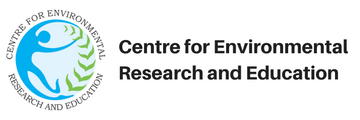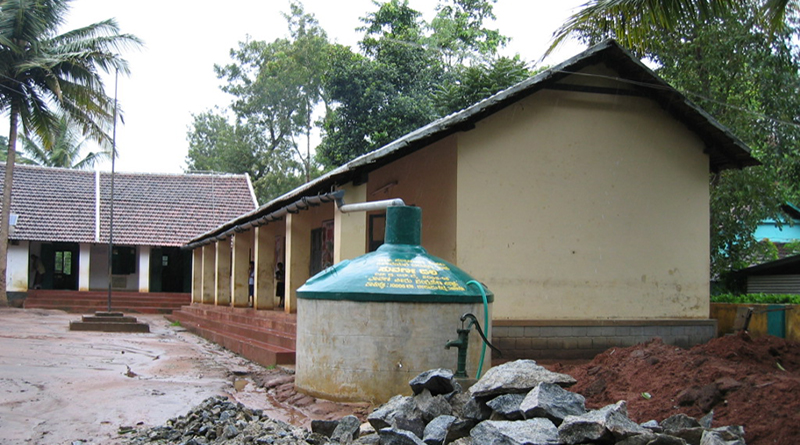Documenting Successful Models of Environmental Education across India
The United Nations has declared the coming decade (2005-2015) as a ‘Decade of Education for Sustainable Development’. CERE firmly believes that Environmental Education is one subject that cannot and must not be taught from a text book and it is vital to make educational institutions the very grounds where sustainable lifestyles are practiced rather than preached for example, practicing energy conservation, waste management, rainwater harvesting, greening the school/college/educational premises and the neighbourhood, city farming, using renewable energy, using public transport and saving resources such as paper.
The first step that CERE has presently undertaken is to ‘document the successful models of environmental education across India ‘ and best sustainability practices undertaken by the schools. CERE will publish the results of the survey as a Teachers’ Handbook cum Guidebook so that time tested and tried models that can be easily adopted by educational institutions in every state of the country.
DELHI
A number of prominent schools in Delhi are practicing a variety of sustainability measures such as rainwater harvesting, waste management and greening.New school buildings such as Sanskriti school have incorporated rainwater harvesting systems into their architectural design plans while Mira Model School has worked with its existing structure rather than creating any new building features, to establish a rainwater harvesting system. The gutters and drains on the main school buildings have been connected to channels that divert the water towards five recharge wells. Shri Ram School has also implemented a successful rooftop rainwater harvesting system where roof water outlets are interconnected through a network of pipes and collection chambers to a filtration-cum-buffer tank. The overflow from the tank is diverted to a borewell that supplies water to the school. Unique methods are also used to involve the student body in sustainability issues.
Students from Sanskriti school are taken to Hauz-e-Shamsi and Jharna, two traditional water harvesting structures, to understand how water conservation was practiced even in the olden days. A number of schools address waste management issues by having vermi-compost or enzyme-compost pits near the school cafetaria. The compost is then used in gardening projects and plantation drives. A majority of schools also recycle paper by making handmade paper. Presentation Convent School has invested in a paper recycling machine where the school’s used paper is turned into sheets of beautiful handmade paper. This paper is then used by the school for many purposes including official certificates, folders and bags. Delhi has a unique programme called the Lead School Program wherein a designated Lead School provides guidance and training on environmental education activities to 25 other schools in the locality each school participating gets a token grant of Rs. 4000 from the Department of Environment for undertaking various eco-friendly activities. This concept allows for quick dissemination of ideas and information to schools across Delhi.
TILONIA
The best model of solar energy and alternative energy was documented at the Barefoot College in Tilonia, Rajasthan. The entire college campus is totally self-sufficient with a 40 kilowatt solar energy unit meeting all its energy needs . The College was established to train rural, illiterate youth and women as barefoot solar engineers in order to introduce solar technology to their villages. The College has trained 392 rural youth and women from across the country as barefoot solar engineers and to-date Barefoot Solar Engineers have done yeoman service for India such as installing solar photovoltaic (SPV) home lighting systems in 350 villages and hamlets covering a total number of 12000 households, electrifying 300 adult education centres and 870 schools across the country, manufacturing and maintaining 3530 solar lanterns, providing three hours of light in the bleakest winter to 1530 families in 28 remote and inaccessible villages in Ladakh through 40 KWs of solar panels and saving approximately hundred thousand litres of kerosene in Leh and Kargil districts through solar energy initiatives. The Barefoot College has rightly won many awards, including the Ashden Award, for practicing and promoting the use of solar energy.
KOLKATA
Sr. Cyril’s pioneering efforts at Loreto Day School in Sealdah, Kolkata, has made the school an international model of best practice in community service and leadership. Traditionally a private English-medium institution, today half of the school’s intake of pupils are non fee-payers from the slums and poorer areas of Kolkata. These students are subsidized by the fee-paying students. In 1985, Sr. Cyril set up the Rainbow School which is a school-within-a-school for street children who “drop in like rainbows and give joy as they appear”. Initially, the street children were taught literacy, numeracy, craft skills and life skills on a one-to-one basis by volunteers but over the years, the Rainbow School has progressed from being a ‘tag-on’ afternoon programme to a much more structured and integral programme of curriculum development and child-to-child teaching and learning within the main school.
The street children are individually tutored by ‘regular’ students from Standards V to X, who have been allocated 90-minute timetabled slots of Work Education on a weekly basis for this purpose. On an average, 70 to 90 ‘rainbow students’ drop-in for classes on a daily basis, of which annually some 50 children are placed are integrated into main education. Although most of these children attend municipal schools which teach in the vernacular, as many as eight street children have been integrated into English-medium programs at Loreto or other Catholic schools. Most ex-Rainbow pupils have found secure jobs and no longer live off the streets of Kolkata. Loreto Day School is doing path breaking work on community service and education for citizenship. A number of schools in Kolkata work closely with non-government organisations and work on civic projects like Clean Howrah Project and Tree Census Project undertaken by the students of La Martinere School.
SANSORA
The Lok Bharati institute in Sanosara, Gujarat operates on the Gandhian Principles of Community Living and does commendable community service through a major Extension Programme with surrounding villages. At present there are 8 adopted villages where a range of activities are carried out by the staff and students of Lok Bharati, such as soil and water conservation, solar electrification, biogas installation, organic farming, animal husbandry, village sanitation, woman-n-child health and nutrition, household herbal remedies and eradication of superstitions. As a part of this programme, small groups of teachers and all post graduate students work with their respective adopted villages for a minimum of four hours a week for three years with every student establishing close contact with at least five families in the village.
Interestingly, final year dissertation projects involve students living with a family in the village for a period of six months in order to better understand the difficulties facing the villagers so that each student uses their education to seek solutions. Concurrently, groups from the adopted villages such as farmers, school children, women and senior citizens are invited to the Lok Bharati campus for educational programmes run throughout the year. This Extension Programme helps establish permanent relations within a larger community so as to create awareness and seek redressal for a range of local environmental and social issues. Lok Bharati is an institution that is truly a living laboratory that helps neighbouring communities live in harmony with nature.
PUNE
Aksharnandan school in Pune is an exemplary model of Environmental Education in action. This school practices many sustainability measures that can be easily replicated by other schools across the country such as water conservation, waste management including vermicomposting, farming where students grow different kinds of vegetables and pulses, and a range of environmental projects. The entire school only uses one-sided paper that has been discarded by corporate houses and donated by papers. When a child tears a piece of paper in Aksharnandan the other children shout, “Tai, tai teni jaad todla!” which translates into “Teacher, teacher, he has cut down a tree!” That is the true test of environmental education. In this Marathi medium school, environmental conciousness is at the very core of every student and teacher and learning is by doing rather than being taught. Aksharnandan school is one of the few pioneering institutions across the country that have taken the initiative to impart Environmental Education in the truly holistic manner with a focus on sustainability.
MUSSORIE
The Convent of Jesus and Mary School in Hampton Court , Mussoorie has evolved an exemplary waste management model that has been streamlined to perfection over the past 18 years. The simple model, designed by Mr. Vipin Kumar, has made the school a zero-garbage zone wherein students of all classes learn how to segregate their own classroom waste into two bins: biodegradable and non-biodegradable waste. Additionally, each student from Class IV-X collects solid/dry waste from five homes on a weekly basis, brings it into school and personally segregates the waste in the Waste Management Room of the school. Each day young rag pickers collect all the segregated solid waste from the school and sell it to a central, government-authorised, waste collection site in the town, which has to buy all types of dry waste such as paper, metal, plastic, cloth, glass and also store any ‘non-recyclable’ waste.
Moreover, children in the school are taught how to recycle the wet, biodegradable waste which is used for tree plantation drives around the school. Since children learn about waste management from a very young age they grow up to be adults capable of managing their own waste. This model also greatly helps young rag pickers who are assured of segregated, bulk waste on a daily basis which in turn allows them time to go to school. The young rag pickers or the children of rag pickers are tutored free of cost in the school.This Hampton Court Waste Management Model should be practiced by as many schools across India as possible.

